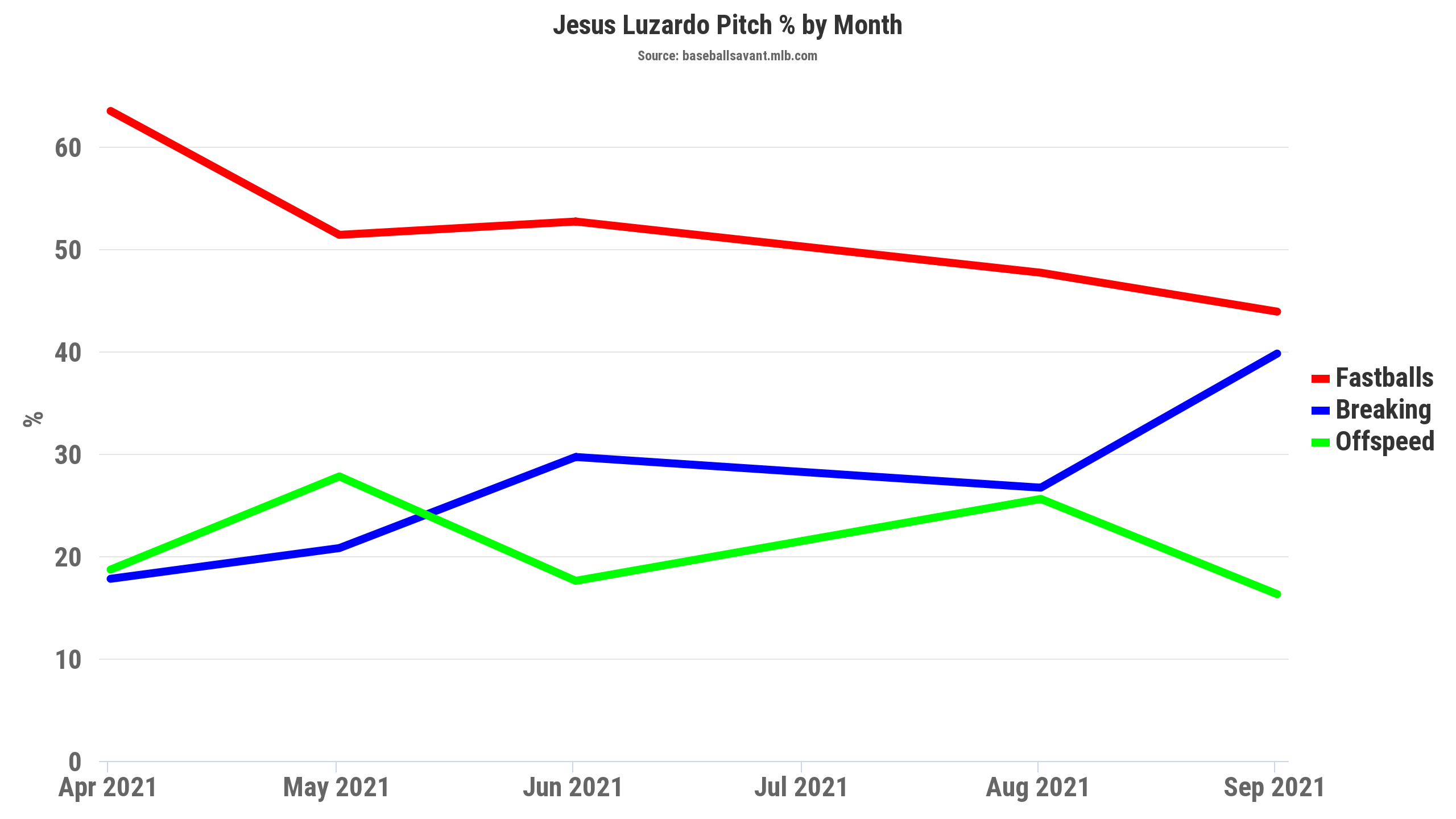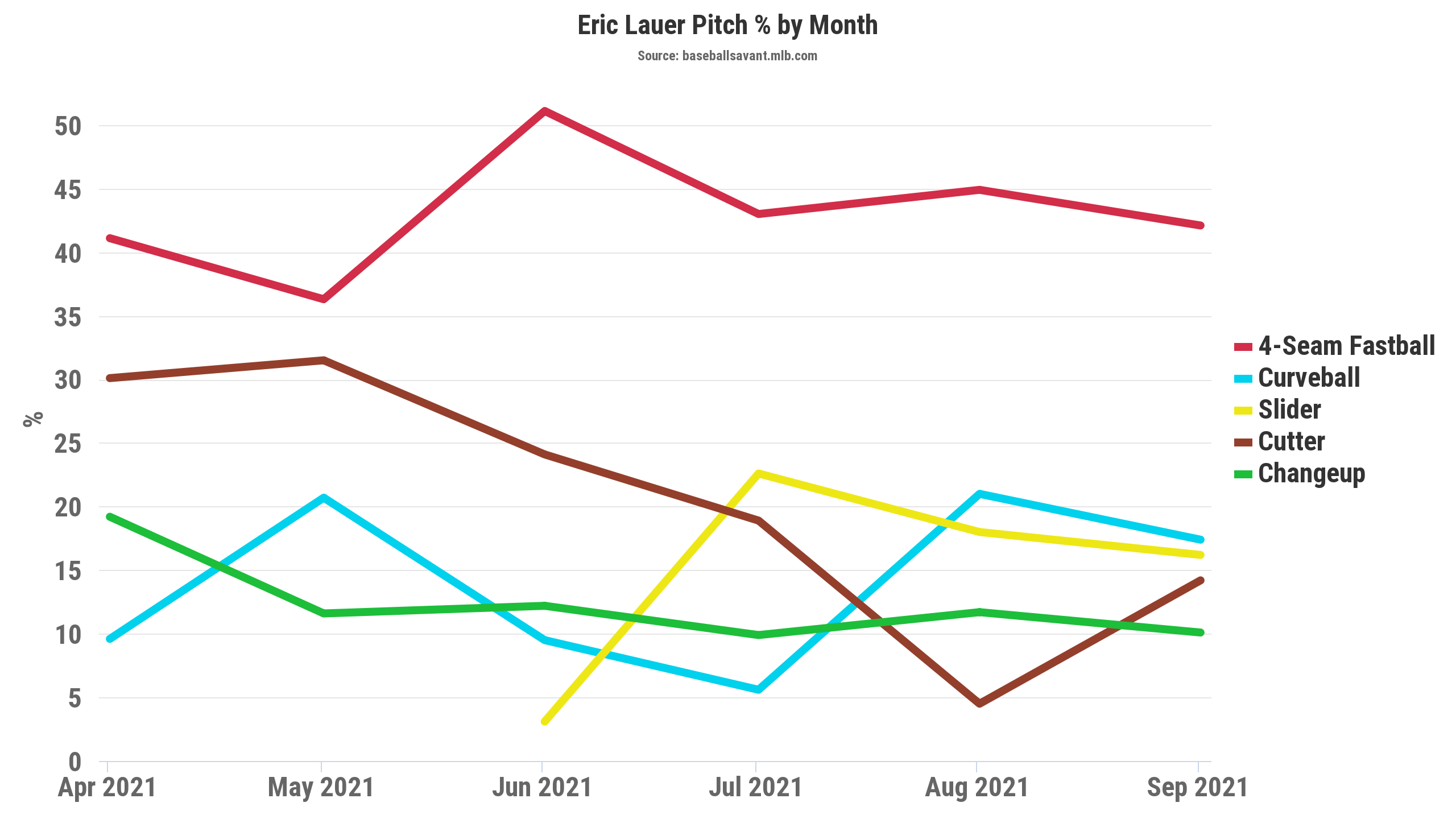When it comes to building a fantasy baseball rotation, we tend to focus on the front-line starters that make up the top of the rotation. However, a pitching staff is only as strong as its weakest link, making it paramount that you solidify your rotation with enough depth.
Where does this depth come from? Nailing your late-round starting pitching picks. Putting in the research to find out who could be this year’s diamond in the rough can be just what you need to go over the top. After all, these are among the pitchers drafted after pick #260 last year:
- Freddy Peralta
- Carlos Rodón
- Alek Manoah
- Trevor Rogers
- Chris Sale
- Ranger Suárez
- Shane McClanahan
- Casey Mize
- Taijuan Walker
- Chris Flexen
- Patrick Sandoval
- Logan Gilbert
- Adam Wainwright
- Luis Garcia
- Huascar Ynoa
- Anthony DeSclafani
- Robbie Ray
- James Kaprielian
- Kyle Gibson
- Cal Quantrill
- Tarik Skubal
- Alex Wood
- Dylan Cease
- Logan Webb
Those are a lot of pitchers who generated surplus value and past pick #260. The goal in 2022? To replicate that list with pitchers we can identify. Today, we will be looking at four late-round pitchers who you should take a chance on in drafts. Their current outlook may look somewhat cloudy with a chance of rain, but it could be clear skies by the end of the year if things go as planned. Who are these potential diamonds in the rough? Let us get right into it!
ADP Data via NFC.shgn.com (Drafts since December 1st)
Stats via Baseball Savant and Fangraphs
Triston McKenzie (CLE)
- 2021 Stats (120 IP): 4.95 ERA, 4.70 FIP, 1.18 WHIP, 27.5% K, 11.7% BB
- ADP: 236.98
As a former top pitching prospect, it seemed like no surprise when Triston McKenzie posted a 33.1% strikeout rate with a 3.24 ERA inches first 33.1 MLB innings in 2020. With his prospect pedigree and 2020 production, all expectations were that he’d emerge as the front-line starter he was destined to be in 2021.
Unfortunately, that did not happen. In the first half, McKenzie struggled mightily with a 5.47 ERA and 18.9% walk rate, leading to him being demoted to the minors in the middle of June. At that point, it looked like all hope was lost for the 24-year-old. However, the story wasn’t over.
Upon being recalled back to the majors at the beginning of July, McKenzie was a completely different pitcher. From there on out, he had a 3.94 skill interactive ERA (SIERA), while he lowered his walk rate to 6.2%. It was quite the turnaround for someone who couldn’t find the zone at all, but it is something that should carry over into 2022. Why? It all comes back to his fastball velocity:
As long as McKenzie’s fastball velocity stays where it is, I’d expect his command to remain strong. If so, you’re getting a pitcher with strikeout ability, a low WHIP (0.97 upon being called up), and an upside much more based on his minor-league stats and prospect pedigree. When you’re talking about upside late in drafts, he is the epitome of it. We’ll need to see how many innings he pitches, yet I’d be quite optimistic about the Guardians’ young starter heading into 2022.
Jesús Luzardo (MIA)
- 2021 Stats (95.1 IP): 6.61 ERA, 5.48 FIP, 1.62 WHIP, 22.4% K, 11% BB
- ADP: 298.9
Even more so than McKenzie, expectations were incredibly high for Jesús Luzardo. The 24-year-old was being drafted ahead of pitchers like Kevin Gausman, and he was expected to be the ace of the A’s in 2022. As you can see by the overall statistics, that did not happen.
During his time with the A’s last year, Luzardo posted a 6.87 ERA, 1.63 WHIP, and 6.09 FIP, but that was far from the only chaos. He injured his hand while raging from a video game, and then was put in the bullpen after that. As of June 19th, he was demoted to the minor leagues, and that’s where he was until he was traded to the Marlins for outfielder Starling Marte.
A change of scenery was obviously something Luzardo needed, and not just for the typical reasons. See, his sinker (.421 wOBA allowed) and fastball (.454 wOBA allowed) were hit hard last year and were clearly worse pitches than his curveball (42.4% whiff) and changeup (35% whiff). With the Marlins, he saw his pitch usage go to where it needed to be:

With the Marlins, Luzardo raised his swinging-strike rate to 13.6%. The problem? His command failed him. His walk rate rose to 12.1%, while his strikeout rate actually decreased to 22%. At the same time, this can be expected with such a drastic change in pitch arsenal in such a short period of time. To see him maintain faith and even bump up his curveball usage up in the final month of the season is extremely encouraging.
Now, Luzardo has a full offseason to get used to this optimized pitch mix. Remember, this is someone who was seen as one of the top pitching prospects in the entire sport. We know that he can miss bats with two tremendous off-speed pitches. Now, it’s time for that mesh of stuff and command to come altogether in 2022. As a flyer at the final stages of your draft, you could do a lot worse.
Tylor Megill (NYM)
- 2021 Stats (89.2 IP): 4.52 ERA, 4.69 FIP, 1.28 WHIP, 26.1% K, 7.1% BB
- ADP: 315.34
Whereas McKenzie and Luzardo were hyped-up prospects destined to be impactful big-leaguers, the same cannot be said about Tylor Megill. Heading into 2021, Megill was a relative unknown, but after shredding the minor leagues with a 36% strikeout rate and 2.47 FIP in eight starts, he was called up to the majors.
Initially, Megill’s stay with the Mets was supposed to be a short-term fill-in for injuries. However, due to the injuries being more serious than initially thought of, as well as Megill’s electric start, he found his way into the big-league rotation for the rest of the season. In his first seven starts, he posted a 2.04 ERA, in addition to a 27.1% strikeout rate and 7.6% walk rate.
From there, regression took place, though that was to be expected. Overall, Megill’s ERA doesn’t stand out, but that was impacted harshly by a poor 1.91 HR/9. Unless you expect his 18.8% home run/fly ball rate to remain in place, you can bank on that going down. Strikeout to walk ratio is still the best predictive measure for future ERA, and Megill stands out here. The ability to not walk batters and throw strikes also leads to a lower WHIP, giving him more lee-way in the ERA department. Regardless, Megill brings a lot more to the table than you would think.
What makes the 26-year-old unique? His ability to generate over 7 feet worth of extension on all of his pitches. This allows his 94.6 MPH fastball to have a higher perceived velocity, which is exactly what can lead to his results being better than you would expect in terms of missing bats. It also helps that, in his slider and changeup, which each induced a whiff on over 30% of the swings against it, he has two complementary pitches to feed off his fastball.
Tylor Megill, Mean 88mph Slider…and Sword of the Week contender. ⚔️
h/t @PFriedATL (who yelled “sword!” from our living room) pic.twitter.com/Jq4EwjuW6d
— Rob Friedman (@PitchingNinja) June 29, 2021
Tylor Megill, Wicked Changeups. ? pic.twitter.com/xQkcOAk9ba
— Rob Friedman (@PitchingNinja) July 29, 2021
Megill was occasionally bit by his inconsistent command last year, which played a role in the large home run rate. However, command isn’t very sticky from year-to-year, so I’d much rather trust someone with the ability to miss bats. Furthermore, he induced a ground ball on 44.4% of batted balls, so it’s not as if the home runs are due to him allowing too many fly balls. As of now, it’s looking like he has a spot in the Mets rotation, behind a very strong defense if I should say so myself. In other words, don’t be surprised if it all comes together for him in 2022; after pick 300, why would you want to miss out on that!
Eric Lauer (MIL)
- 2021 Stats (118.2 IP): 3.19 ERA, 4.04 FIP, 1.14 WHIP, 23.9% K, 8.4% BB
- ADP: 320.1
When you’re in a rotation with Corbin Burnes, Brandon Woodruff, and Freddy Peralta, it’s easy to get lost in the shuffle. However, you don’t finish with the third-lowest team ERA without contributions from the back-end of the rotation. That’s where Eric Lauer comes into play.
As you can see from his overall stats, Lauer was quite proficient when it comes to run prevention last year. Yes, his .249 batting average on balls in play allowed (BABIP) was low, and played a role in the ERA being where it was. That being said, even with regression in that department, it won’t be as large as you might think. The Brewers will retain a very strong defense (6th in defensive runs saved) this season, while Lauer’s batted-ball trajectory allowed is favorable. Per Baseball Savant, batted balls classified as “under” (mainly pop-ups) have produced a batting average of .069 in the stat cast era. Well, Lauer’s under% allowed last year was 30.4%, well below the league average of 24.4%. If that continues into 2022, we should see Lauer allow a low BABIP once again, even if it isn’t as low as it was in 2021.
With that in mind, Lauer should be in line to post a low WHIP. Then, there’s a slight pitch-mix change he made during the season:

Lauer had been crafting a new cutter since being traded to the Brewers, but it hasn’t been very effective. Its 10.4% barrel rate allowed is significantly higher than his slider (4.5%), which was simply a more effective pitch last year. Him going away from the cutter after leaning on it early is encouraging, and a more balanced pitch-mix is his track record to success; have one elite pitch, but multiple pitches that all get the job done.
In the second half of the season, Lauer posted a 3.97 SIERA, 2.60 ERA, and, most importantly, a 25.5% strikeout rate to go along with just a 6.9% walk rate. His ability to keep his BABIP allowed low is a skill I think will continue into 2022. That, combined with a low walk rate, should lead to a lower WHIP. It appears he has a spot entrenched in a strong Brewers rotation, especially after his strong second half, and it’s clear that he can be a pitcher with a sub 4.00 ERA with strong contributions everywhere. He might not be the flashy option, but he might have the higher floor of any of the players on this list.
(Photo by Brian Rothmuller/Icon Sportswire & by Allan Dranberg/Icon Sportswire) Adapted by Shawn Palmer @PalmerGuyBoston
